Accepted Scientific Name: Gibbaeum pubescens (Haw.) N.E.Br.
Gard. Chron. 1922, Ser. III. lxxii. 129.
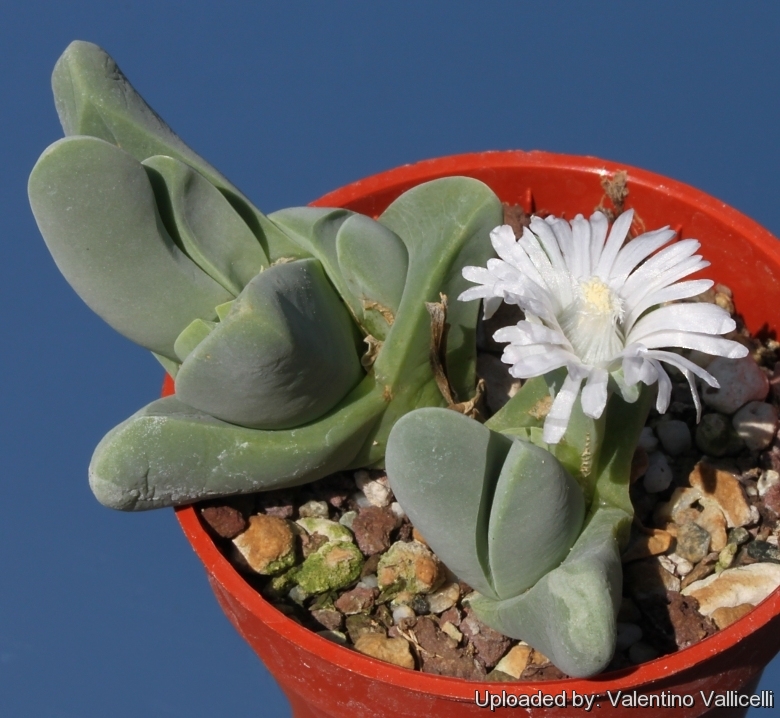
Mesembryanthemum pubescens (Gibbaeum pubescens) Photo by: Valentino Vallicelli
Synonyms:
See all synonyms of Gibbaeum pubescens
back
Accepted name in llifle Database:Gibbaeum pubescens (Haw.) N.E.Br.Gard. Chron. 1922, Ser. III. lxxii. 129.Synonymy: 3
back
Common Names include:
ENGLISH: Shark's Beak
AFRIKAANS (Afrikaans): Haaibekkie
Description: Mat-forming. In habitat it forms large colonies composed by raised and prominent clumps that appears conspicuous in the low shrubby vegetation because of the whitish colour of the foliage
Stems: Short, woody, enveloped by the remains of dead leaves.
Leaves: On each shoot there are two or three pairs of leaves of very unequal length, the longer about 2,5 cm and the other about a third as long. The leaves are united at the base, flare, appear in alternating lengths. They are whitish due the felt-like, silvery pubescence which clothes them.
Notes: Various species of the genus Gibbaeum are called in Afrikaans, ‘Haaibekkie’. In English this ‘beak of a shark’. This very apt name is derived from the shape of the two leaves that together form the plant growth. They differ in size and because these leaves grow closely together the fissure of most species looks exactly like the beak of a shark, though without the teeth of course.
This species was the earliest known species of the genus, just grown in Europe before 1795 when it was published.
Bibliography: Major references and further lectures
1) Heidrun E. K. Hartmann “Illustrated Handbook of Succulent Plants: Aizoaceae F-Z” Springer, 2002
2) Gert C. Nel “The Gibbaeum Handbook, a Genus of Highly Succulent Plants, Native to South Africa” Blandford Press, 1953
3) Hermann Jacobsen “A handbook of succulent plants: descriptions, synonyms, and cultural details for succulents other than Cactaceae, Volume 1” Blandford Press, 1960
4)Werner Rauh “The Wonderful World of Succulents: Cultivation and Description of Selected Succulent Plants Other Than Cacti” Smithsonian Institution Press, 1984
5) Goldblatt, P. and Manning, J.C. 2000. "Cape Plants: A conspectus of the Cape Flora of South Africa." Strelitzia 9. National Botanical Institute, Cape Town.
6) Hilton-Taylor, C. 1996. "Red data list of southern African plants." Strelitzia 4. South African National Botanical Institute, Pretoria.
7) Vlok, J. and Schutte-Vlok, A.L. 2010. "Plants of the Klein Karoo." Umdaus Press, Hatfield.
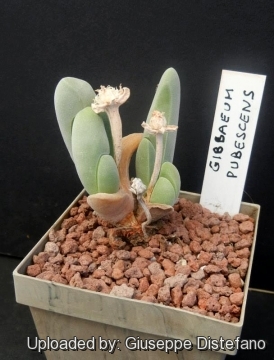 Mesembryanthemum pubescens (Gibbaeum pubescens) Photo by: Giuseppe Distefano
Mesembryanthemum pubescens (Gibbaeum pubescens) Photo by: Giuseppe Distefano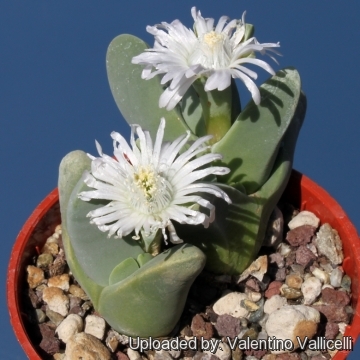 Mesembryanthemum pubescens (Gibbaeum pubescens) Photo by: Valentino Vallicelli
Mesembryanthemum pubescens (Gibbaeum pubescens) Photo by: Valentino Vallicelli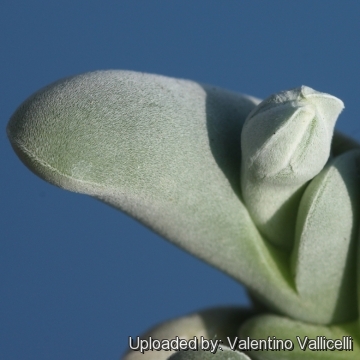 Mesembryanthemum pubescens (Gibbaeum pubescens) Photo by: Valentino Vallicelli
Mesembryanthemum pubescens (Gibbaeum pubescens) Photo by: Valentino Vallicelli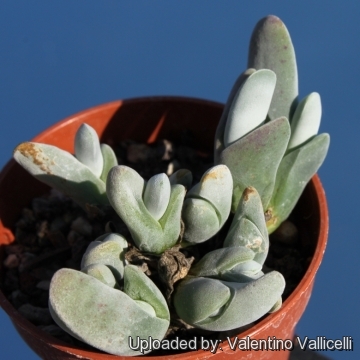 Kareevloakte (Gibbaeum pubescens) Photo by: Valentino Vallicelli
Kareevloakte (Gibbaeum pubescens) Photo by: Valentino Vallicelli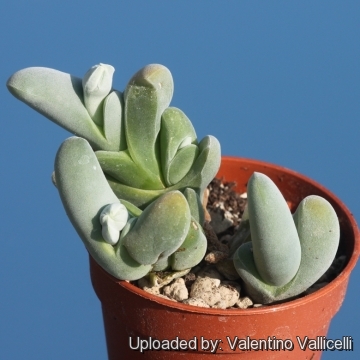 Mesembryanthemum pubescens (Gibbaeum pubescens) Photo by: Valentino Vallicelli
Mesembryanthemum pubescens (Gibbaeum pubescens) Photo by: Valentino Vallicelli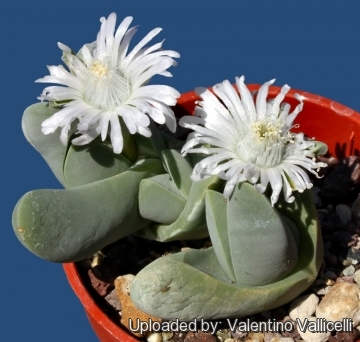 Mesembryanthemum pubescens (Gibbaeum pubescens) Photo by: Valentino Vallicelli
Mesembryanthemum pubescens (Gibbaeum pubescens) Photo by: Valentino VallicelliCultivation and Propagation: It is a "winter" grower which is most active from late winter until later spring and heading for summer dormancy, and notoriously difficult to grow because it rot very easily, but Gibbaeum pubescensSN|14659]]SN|14659]] is not so difficult in cultivation, keeps going over the summer too and don’t’ need very special care.
Soil: It grows best in sandy-gritty soil and requires good drainage as it is prone to root rot. It can grows outdoor in sunny, dry, rock crevices (protection against winter wet is required) It can also be cultivated in alpine house, in poor, drained soil.
Fertilization: Feed it once during the growing season with a fertilizer specifically formulated for cactus and succulents (poor in nitrogen), including all micro nutrients and trace elements diluted to ½ the strength recommended on the label. It thrives in poor soils and need a limited supplies of fertilizer to avoid the plants developing excess vegetation, which is easily attacked by fungal diseases.
Watering: The Gibbaeums thrive in dry and desert regions and are able to stand extended periods of drought and require careful watering. Water minimally in summer, only when the plant starts shrivelling, water more abundantly when they are growing in the autumn and spring, but let the soil dry between soaking. Requires little water otherwise its epidermis breaks (resulting in unsightly scars). If grown in a container, bottom watering by immersing the container is recommended. It must have very dry atmosphere.
Light: It needs a bright sunny or light shade exposure in winter, but keep cool and shaded in summer.
Hardiness: It prefer a very bright situation and require a minimum temperature 5°C (But will take a light frost and is hardy down to -7° C for short periods if it is in dry soil). USDA zones 9A – 11.
Uses: Container, rock garden.
Pests & diseases: Stomatium suaveolensSN|27224]]SN|27224]] may be attractive to a variety of insects, but plants in good condition should be nearly pest-free, particularly if they are grown in a mineral potting-mix, with good exposure and ventilation. Nonetheless, there are several pests to watch for:
- Red spiders: they may be effectively rubbed up by misting the vulnerable plants every day
- Mealy bugs: occasianlly they develop aerial into the new leaves and flowers with disfiguring results, but the worst types develop underground on the roots and are invisible except by their effects.
- Sciara Flies: they are one of the major problems for seedlings. It is a good practice to mulch your seedlings with a layer of grit, which will strongly discourage the flies.
- Scales, thrips and aphids: they are rarely a problem.
It is wise to treat your whole collection with a systemic insecticide twice a year in spring and autumn.
- Rot: it is only a minor problem with mesembs if the plants are watered and “aired” correctly. If they are not, fungicides won't help all that much.
Propagation: Seed in autumn or (or rarely) cuttings. Take the cutting from a grown-up mother plant. Each cutting must contain one or more heads along with a fraction of root and permit to dry out a couple of days, lay it on the soil and insert the stem end partially into the soil. Try to keep the cutting somewhat upright so that the roots are able to grow downward. It is relatively difficult to root Gibbaeums from cuttings and generally pointless as well, so quick are they from seed.
















